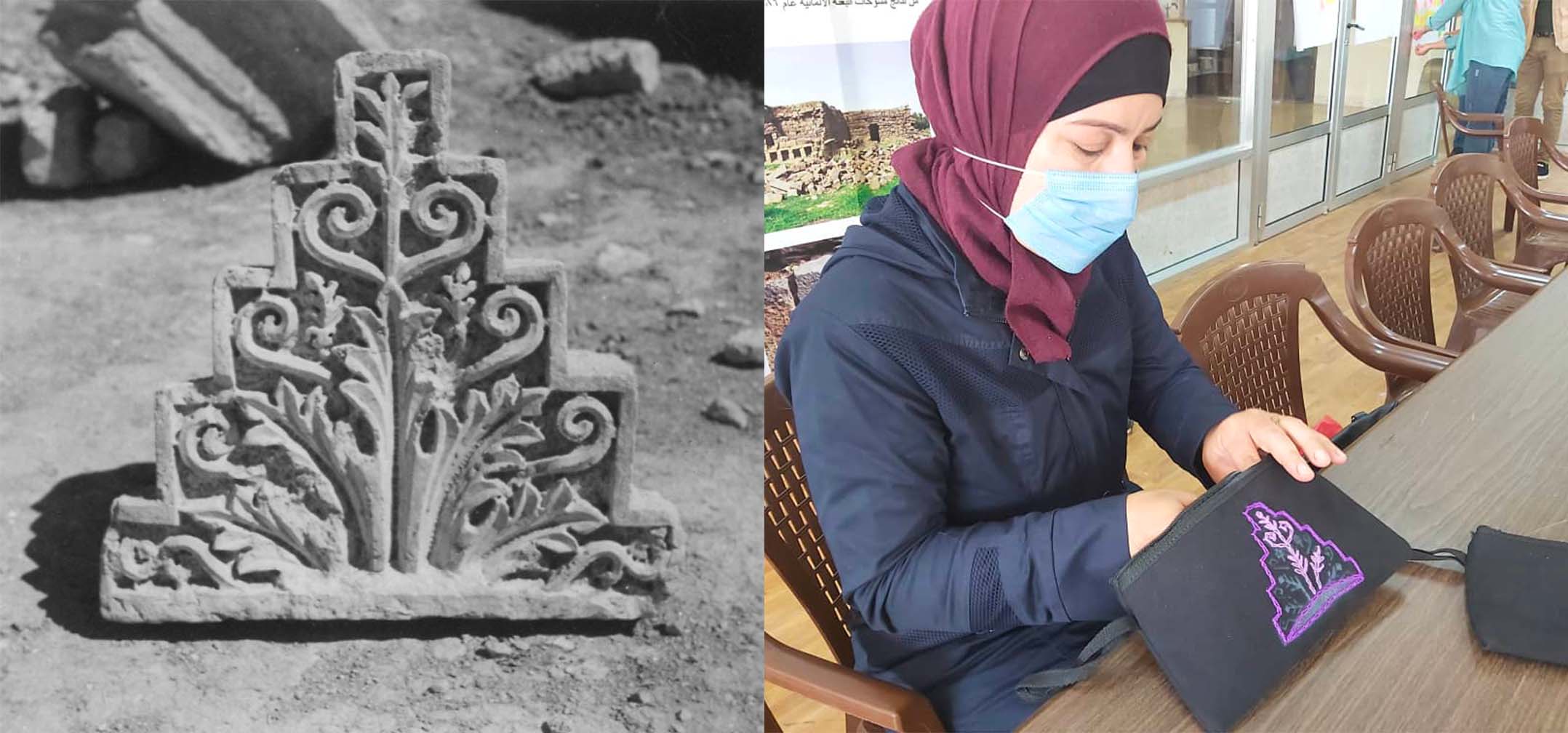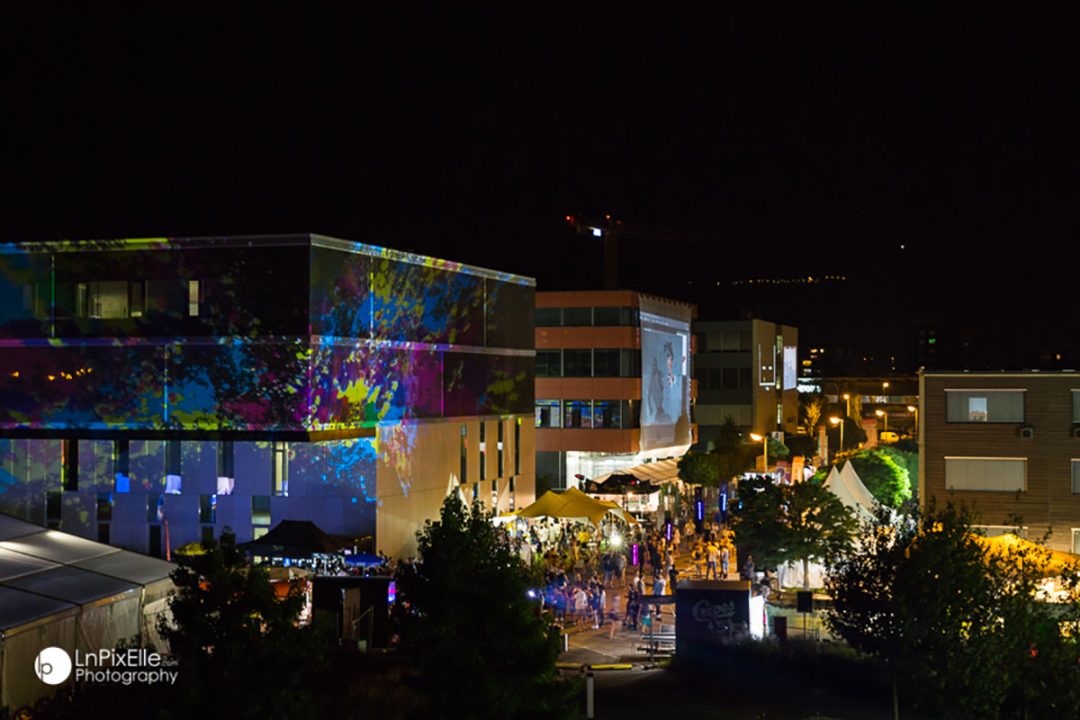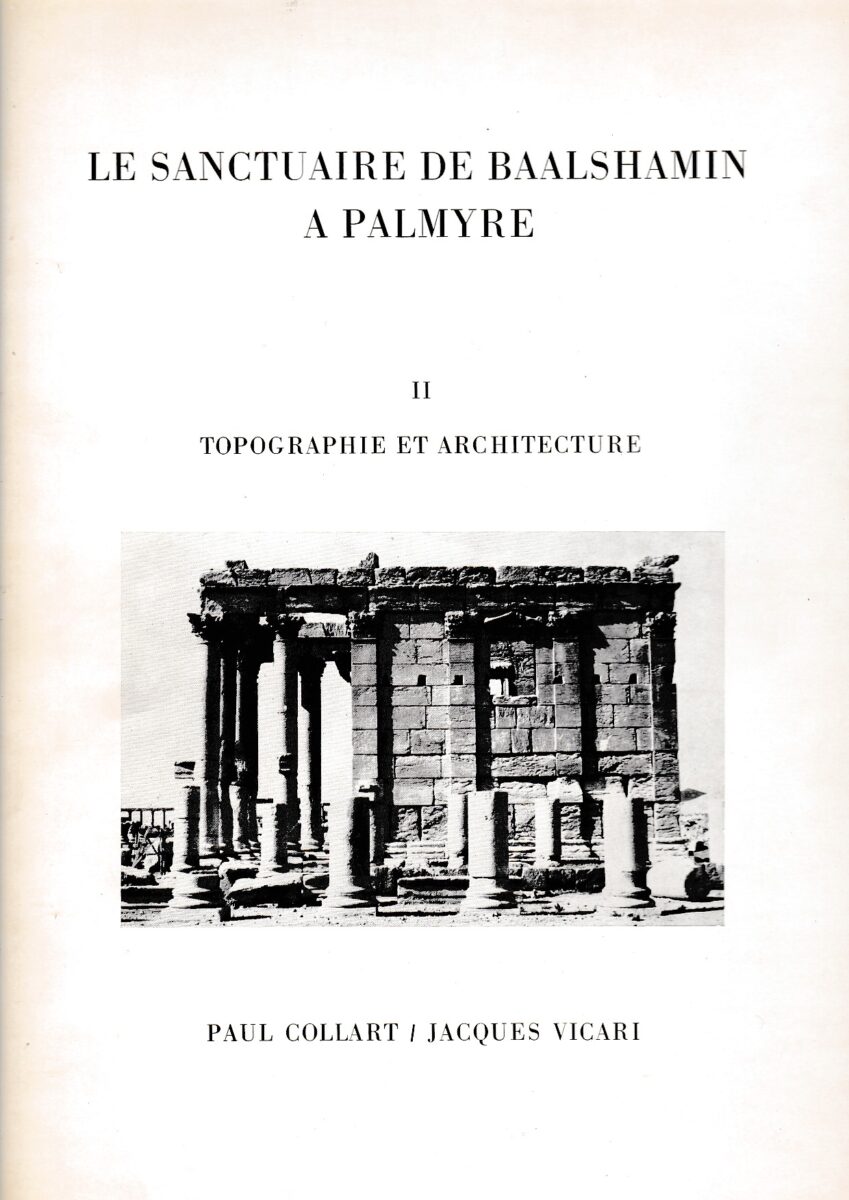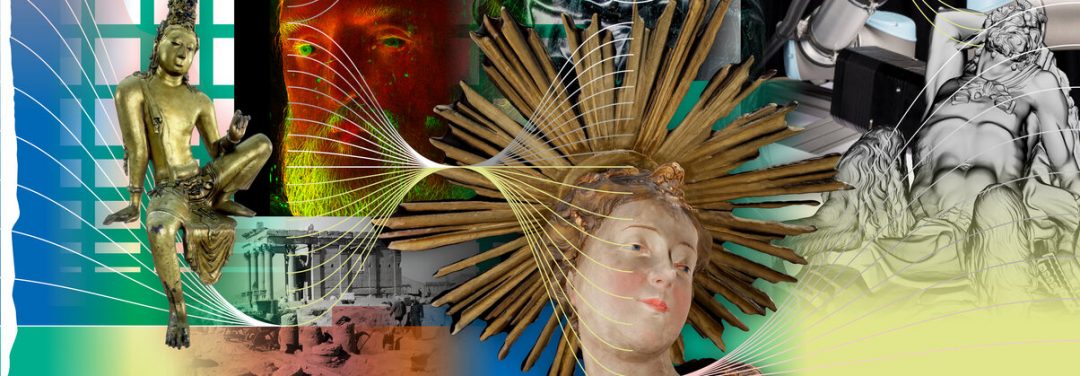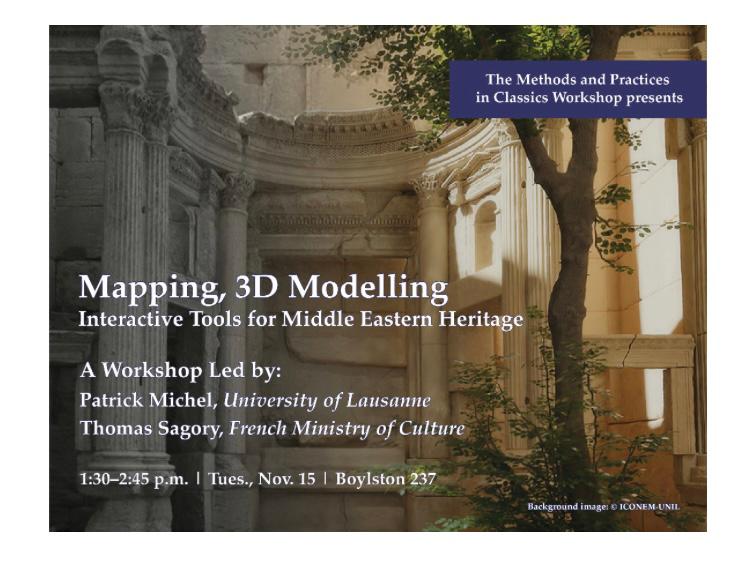In 2020, the Collart-Palmyre Project (UNIL) and UNDP-Syria planned and implemented social and pedagogical embroidery activities in different cities from Syria.
Summer 2019, members of the Collart-Palmyre Project (CPP) met with Mrs. Sarah Chardonnens – Social cohesion and Peacebuilding advisor for the United Nations Development Programme (UNDP) at that time – to talk about an embroidery activity developed within the Swiss Project. This activity carried both social and pedagogical values and was meant to be implemented with members of the Syrian community. Mrs. Chardonnens was very enthusiastic about such an activity and, six months later, members of the CPP had worked on the design of the embroidery motifs, gathered the needed material for the implementation of the activity, and sent the whole set to Mrs. Chardonnens who brought everything with her in Syria. This material includes an original Arabic booklet on the history of Palmyra, its multiculturality and the importance of the textiles in the history of the city, as well as embroidery tools.
The idea of the embroidery activity for this project was not chosen at random. In fact, it answered an antique tradition that Prof. Andreas Schmidt-Colinet explains in his 2019 article on Palmyrene textiles (« Bauornamentik und Textilmuster in Palmyra », in : B. Wagner-Hasel et M.-L. B. Nosch, Gaben, Waren und Tribute. Stoffkeislaufe und antike Textilökonomie, Stuttgart: Franz Steiner Verlag, 2019, p. 477–485). In this article, Prof. Schmidt-Colinet presents the popularity of the Palmyrene embroidery motifs during antiquity and underlines the evolution of the motifs embroidered on the clothes. In particular, he explains how the motifs were designed on the clothes carried by the livings before, out of fashion and popularity, they were copied on the sculpted clothes of the statues when the people passed away. These motifs then became so popular that they were designed and engraved on the walls of the temples as decorative motifs. The CPP’s activity wished to echo this antique tradition. However, it took it the other way around: the designed motif came from a merlon excavated on the site of the Baalshamin temple by Paul Collart, and it was meant to be later applied on textiles. Despite its reversed process, working on such a motif allows the creation of a direct connection with Syrian cultural heritage, and this was a key notion for this activity.
Summer 2020, a year after the first contacts between the CPP and UNDP-Syria, the embroidery activity is finally implemented in Syria. Thanks to the great work of our partners, Mrs. Chardonnens and her colleagues, the activity was developed in five different cities in Syria: Aleppo, Hama, Damascus and its suburb, Sweida, and Quneitra. UNDP-Syria organised thematic days on “Women Empowerment” and linked the embroidery activity to the history of Palmyrene famous queen Zenobia. These days were meant to increase awareness on the great multicultural material and immaterial cultural heritage of Syria. Since the activity was implemented in Syria in 2020, it was then reproduced in the refugee camp of Azraq in Jordan, as well as in Idlib (Syria) in 2021.
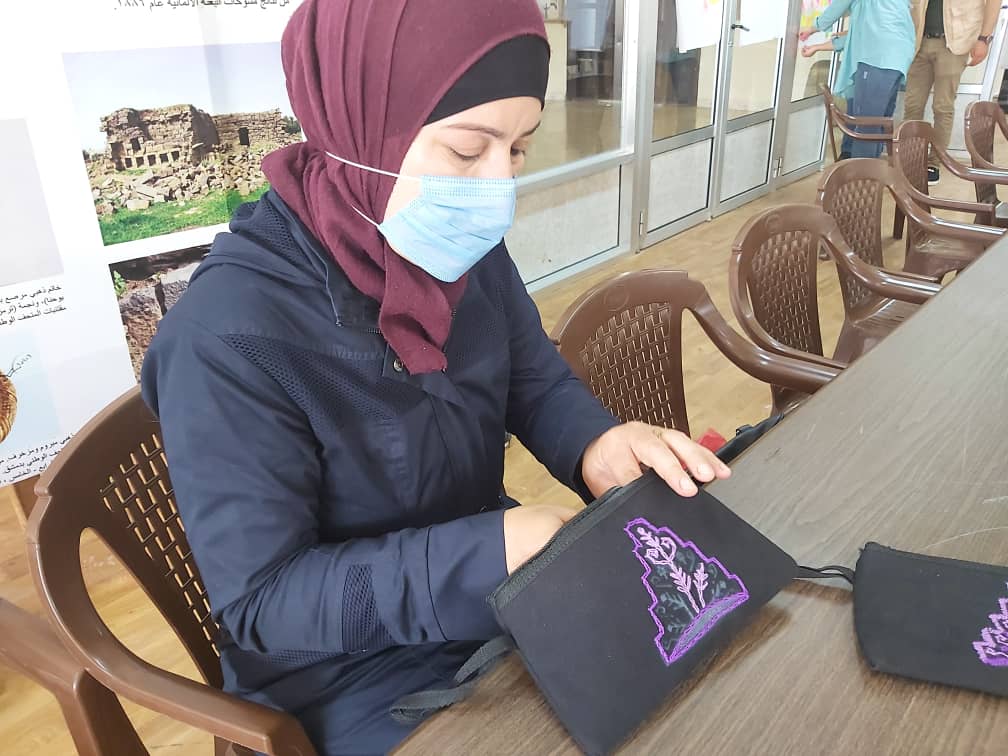
Activité de broderie à Kuneitra © PNUD / ASA-UNIL 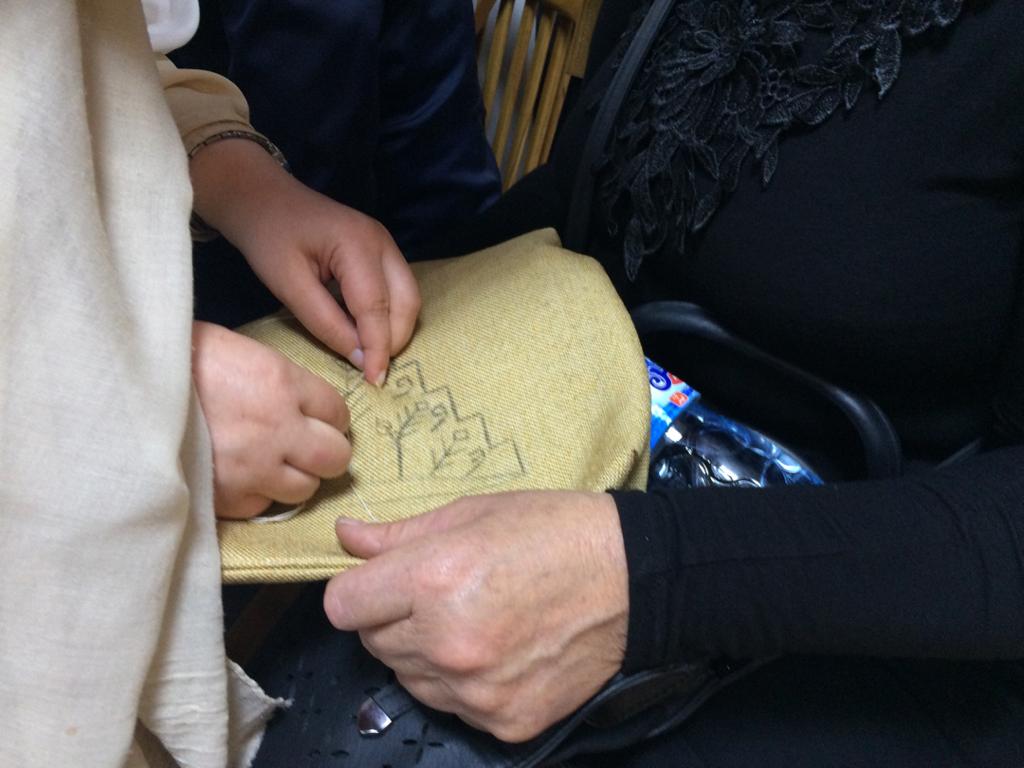
Activité de broderie à Homs © PNUD / ASA-UNIL 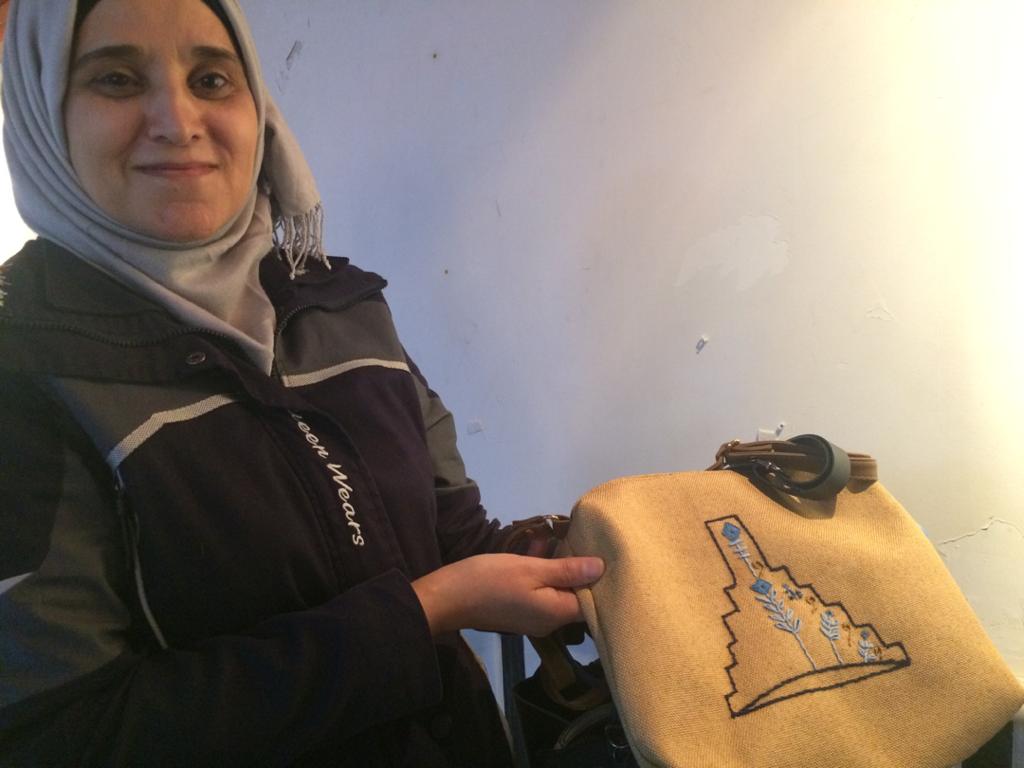
Activité de broderie à Homs © PNUD / ASA-UNIL 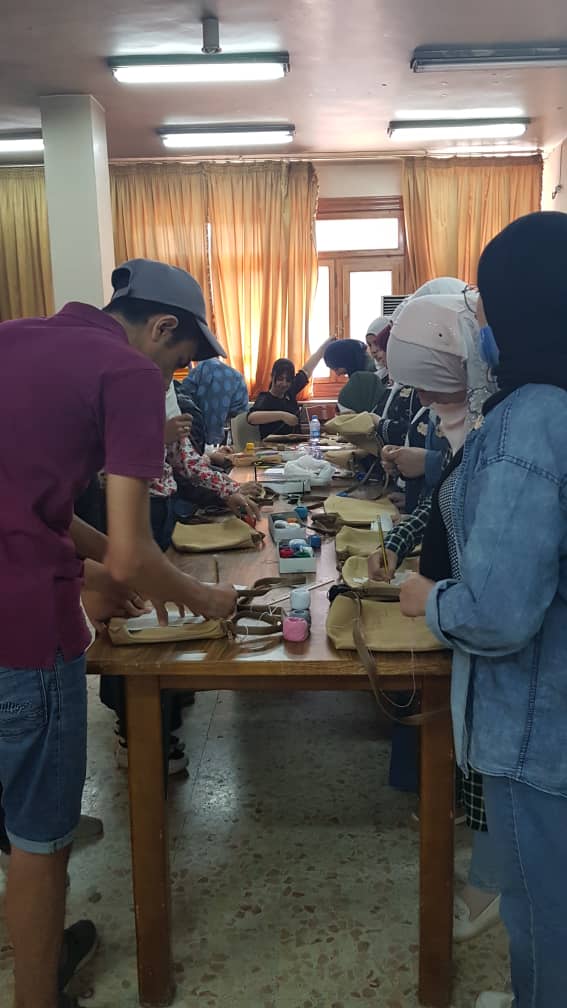
Activité de broderie à Hama © PNUD / ASA-UNIL 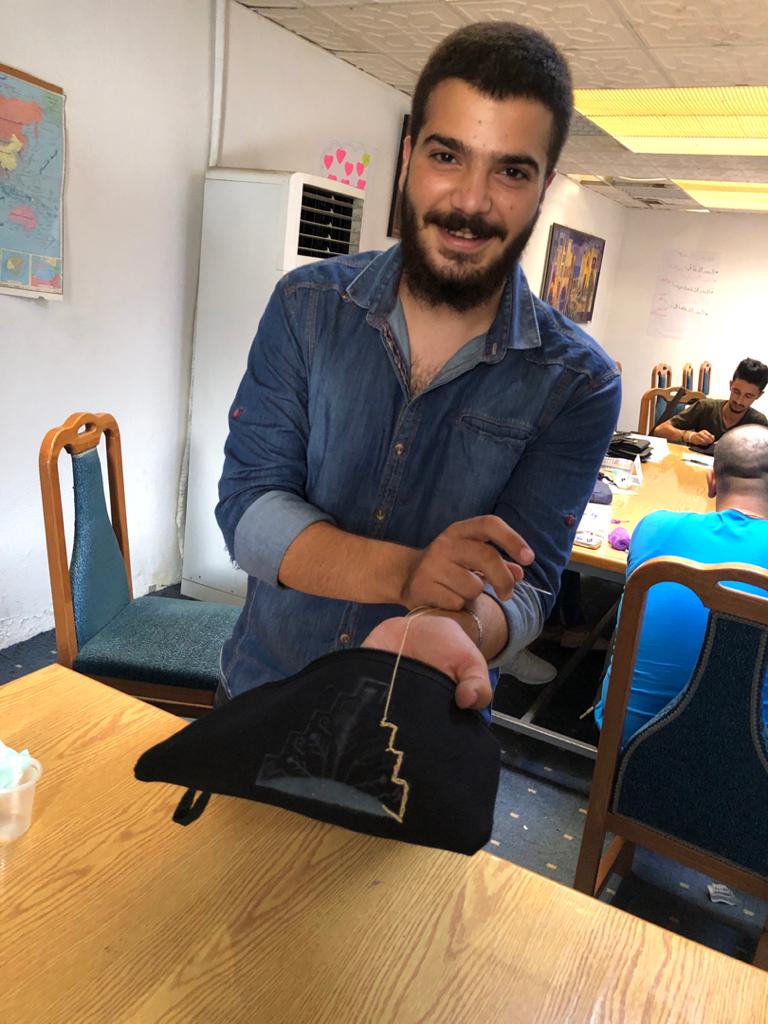
Activité de Broderie à Damascus © PNUD / ASA-UNIL
